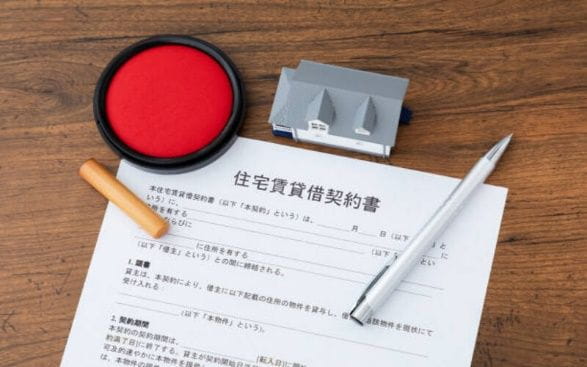Applying for a Japanese travel visa can be a crucial step in ensuring a smooth and enjoyable trip to Japan. However, many applicants make common mistakes that can delay or even derail their visa application. Understanding these pitfalls and how to avoid them is essential for a successful application. Common issues include submitting incomplete or inaccurate application forms, failing to provide sufficient financial documentation, and not adhering to specific visa requirements.

Additionally, not providing a clear and detailed travel itinerary or overlooking the need for a letter of guarantee can also lead to complications. By being aware of these frequent errors and preparing thoroughly, you can enhance your chances of securing a Japan visa. This guide will help you navigate the application process more effectively and ensure that your trip to Japan is as smooth as possible.
Here are some common mistakes to avoid when applying for a Japanese travel visa.
1. Application forms that are inaccurate or incomplete:

Filling out an incorrect or incomplete application form is one of the most frequent mistakes made when applying for a travel visa to Japan. The application form is a crucial document, and any errors or omissions could cause delays or possibly be rejected. Make sure that all fields on the form are completed accurately, including your name, passport number, travel dates, and reason for visit. Make sure you double-check your information before submitting it to prevent simple mistakes like misspellings or inaccurate dates.
2. Inadequate Records of Finance:
Proof of your ability to support yourself financially while visiting Japan is required. Frequently, applicants submit incomplete or out-of-date financial records, which raises questions about their capacity to pay for costs. Providing current pay stubs, bank statements, or other evidence of income that attest to your financial stability is crucial. Verify that the amount shown in these documents is sufficient to pay for your lodging, meals, and other expenses while you are in Japan.
Check Out: How to Get a Japan Travel Visa for Families: Tips and Requirements
3. An inadequate itinerary for travel:

A properly thought-out travel schedule is essential to a successful visa application. Some applicants submit itineraries that are unclear or incomplete, which can lead to the denial of their visa. Your itinerary should include a detailed description of your travel schedule, including the locations you want to see, the accommodations you’re staying at, and any activities you have planned. Including hotel and travel reservation confirmations with your application can help it stand out even more. A well-planned and comprehensive itinerary demonstrates to the Japanese authorities your responsible travel planning and well-defined purpose for visiting.
4. Failure to submit a letter of guarantee when one is needed:
In some circumstances, a letter of guarantee from a Japanese sponsor may be necessary, especially for longer stays or certain visa categories. Frequently, applicants neglect to submit a properly formatted letter or fail to notice this requirement. If a guarantor is required for your visa application, make sure the letter of guarantee is accurate, comprehensive, and contains all the information that is required regarding the guarantor’s financial situation, relationship to you, and promise to support you during your stay. This is an important document that can make all the difference in your application’s success.
5. Disregarding Particular Visa Requirements:

There are several kinds of visas available in Japan, and each has specific requirements. Applying for a visa without fully understanding the requirements for that particular visa category is a common mistake. Every type of visa, be it business, tourist, or event-related, has distinct requirements for qualifying documents. Check the precise requirements for the visa you require before submitting an application. Verify that you fulfill all requirements and submit the required supporting documentation for that particular visa type.
6. Applying Too Late:
When requesting a Japanese travel visa, timing is crucial. Applying too close to the date of travel is a common error that can cause unneeded stress or even cause you to miss your trip if your visa application is delayed. Applying well in advance is advised, as the processing time for a Japanese visa can vary. To allow for any unforeseen processing delays, it is best to begin the process one to two months prior to your travel date.
7. Neglecting the Value of a Specific Travel Objective:
Lastly, a common mistake is not making clear why you are visiting. Immigration officials in Japan are stringent when it comes to knowing why foreigners are entering the nation. Your travel purpose should be made clear in your application, regardless of whether you are going on a business trip, vacation, or visiting loved ones. Any doubt in this regard may result in the denial of the visa. Provide a succinct and understandable justification for your trip, supported by any relevant paperwork such as confirmations of hotel reservations, invitation letters, or conference registrations.
Conclusion
In conclusion, avoiding common mistakes when applying for a Japanese travel visa is crucial for ensuring a smooth and successful application process. By meticulously filling out your application form, providing accurate and up-to-date financial documentation, and presenting a clear and detailed travel itinerary, you can significantly enhance your chances of obtaining a visa. Additionally, understanding and meeting specific visa requirements, including providing a letter of guarantee when necessary, and applying well in advance of your travel date are essential steps.
Paying attention to these details will not only help you avoid unnecessary delays but also increase your likelihood of receiving your Japan visa without issues. Thorough preparation and careful attention to each aspect of your application are key to enjoying a hassle-free travel experience. Ensure you address all requirements and avoid common pitfalls to make your journey to Japan as seamless as possible.
Read More:
0 Comments